Parametric style patterns?
-
Hi guys,
I am just refreshing my SU skills for the coming university year, and i am just wondering wheteher in SU parametric style patterns can be created easily? Here is an example of what i mean. I am very intrigued to try and create something similar in sketchup. Thanks in advance for your help.
Kyle

-
i was thinking about this last night when messing around with the drawing in your other post:
http://forums.sketchucation.com/viewtopic.php?f=79&t=30550i don't know anything about writing scripts for sketchup but i do think it's possible to write something along these lines..
pretty much the idea i had of making it work for the drawing in your other post was something like:
the pattern would be drawn on a flat surface which shares the same outer dimensions of the curved mesh you'd like to apply it to.. then the suface is fitted to the mesh and viola.i don't think sketchup can support something as intense as grasshopper but the requests are out there.. (meaning, grasshopper allows for editing/changing after the fact whereas with sketchup, you'd be pretty much stuck with the surfaces/shapes once created)
http://forums.sketchucation.com/viewtopic.php?f=180&t=22713&start=0&st=0&sk=t&sd=ayou might want to post this as a request in the plugins forum to see if anyone wants to take on the challenge..
-
Hi Kyle, it is actually not very difficult.
No, not a plugin, just making an array of cones, a curved surface and a plane, then using the "drop at intersection" as well as "intersect" commands.
I've made this up for another thread but couldn't find it (scratching head)...
...so here it goes again:

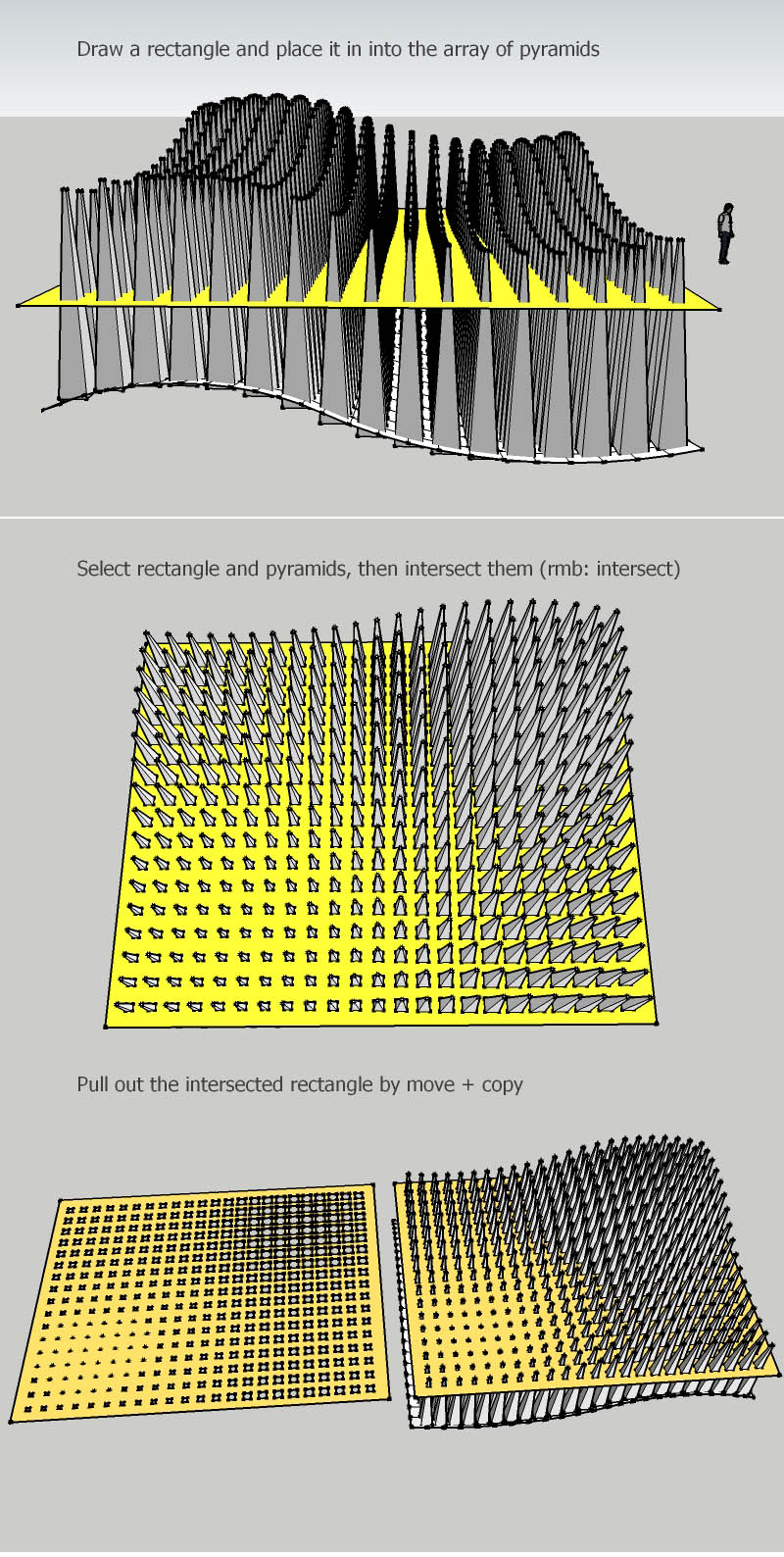

-
also, you might want to check out Grow.rb by TIG
[i couldn't find the plugin on sketchucation but i'm sure it's here somewhere.. TIG is a very regular contributor and writer around these parts
 ]
]it basically allows you to to scaled arrays of an object in the x,y,&z directions as well as rotate..
this video shows only a basic x axis scale array then i rotate and do it again using the same parameters.
i'm pretty sure if you familiarize yourself with this plugins, you'll start creating some of these patterns you seek..[flash=660,405:vwotup0b]http://www.youtube.com/v/Xe1CnA3sc44?fs=1&hl=en_US&rel=0&color1=0x2b405b&color2=0x6b8ab6&border=1[/flash:vwotup0b]
but a ruby that mixes some of the things from Grow with some of the stuff in Extrude Tools (which is what i used to create the warped surface in your other post and is also written by TIG) and i think you'd be well on your way to creating these parametric patterns.. that's why i think you might want to put this in the plugins forum.
[but, notice how i'm saying "TIG can just mix&mash these two plugins and we'll have grasshopper.. Easy!"
 .. i don't think it really works like that.]
.. i don't think it really works like that.] -
Btw, thanks Jeff for the links to the other threads, that is very interesting!
Will take some time to read through that tonight......cheers
alex -
wow, thanks shura and jeff! some great help there, i will have a play with all your ideas and maybe if there good enough post them to show you the outcome! Thank you very much again
Oh, and Jeff i will put a request into the plugins forum asap
Kyle

-
-
hey kyle..
i'm assuming you already know about rhino for osx? if not, make sure to get in on the beta (free)
it's incredibly stable at this point.. still lacking some of the windows functionality but it's on it's way..no grasshopper yet but paneling tools has recently been implemented
http://wiki.mcneel.com/labs/panelingexamplesit's probably going to be in beta another year but should become an official release a few months after rhino5 is released.. definitely worth checking out, especially if you're into generative modeling etc.
beta application available here:
http://mac.rhino3d.com/ -
man, i dunno..
i don't think sketchup could handle this kind of stuff except at the very basic level.. poly counts are going to soar very rapidly with this type of function..just messing around in rhino, i did this and it would absolutely bring SU to its knees if i tried to draw something like that..
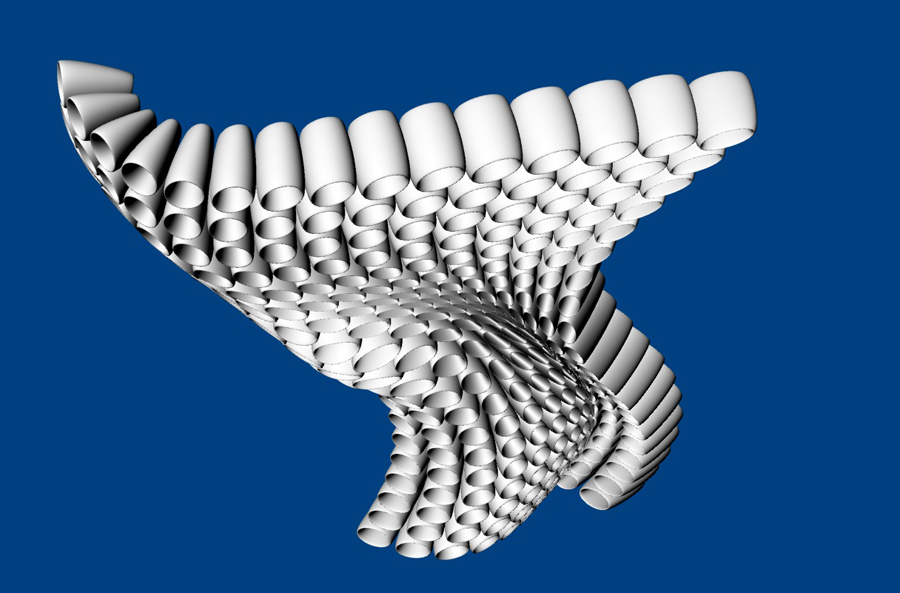
-
Right Jeff, what can be done in SU might be limited, but I found it very surprising how much is in fact possible to achieve. SketchUp is my favorite because the approach is so straight forward, and as long as I can draw something in SU why should I use another application?
For example the plugin parametric array for Max (free version is limited) gives great results, but I am not sure If I will ever buy the licenses needed.
Something like your example might be possible by using FFD plugin. Also there are a variety of plugins like Components on Face, Tapertool, Grow, Slice Modeler, Lattice Maker or Qhull I have been playing with lately. Just one year ago I would not have imagined being able to model things like this in SketchUp.
Here are some test renders I have found:
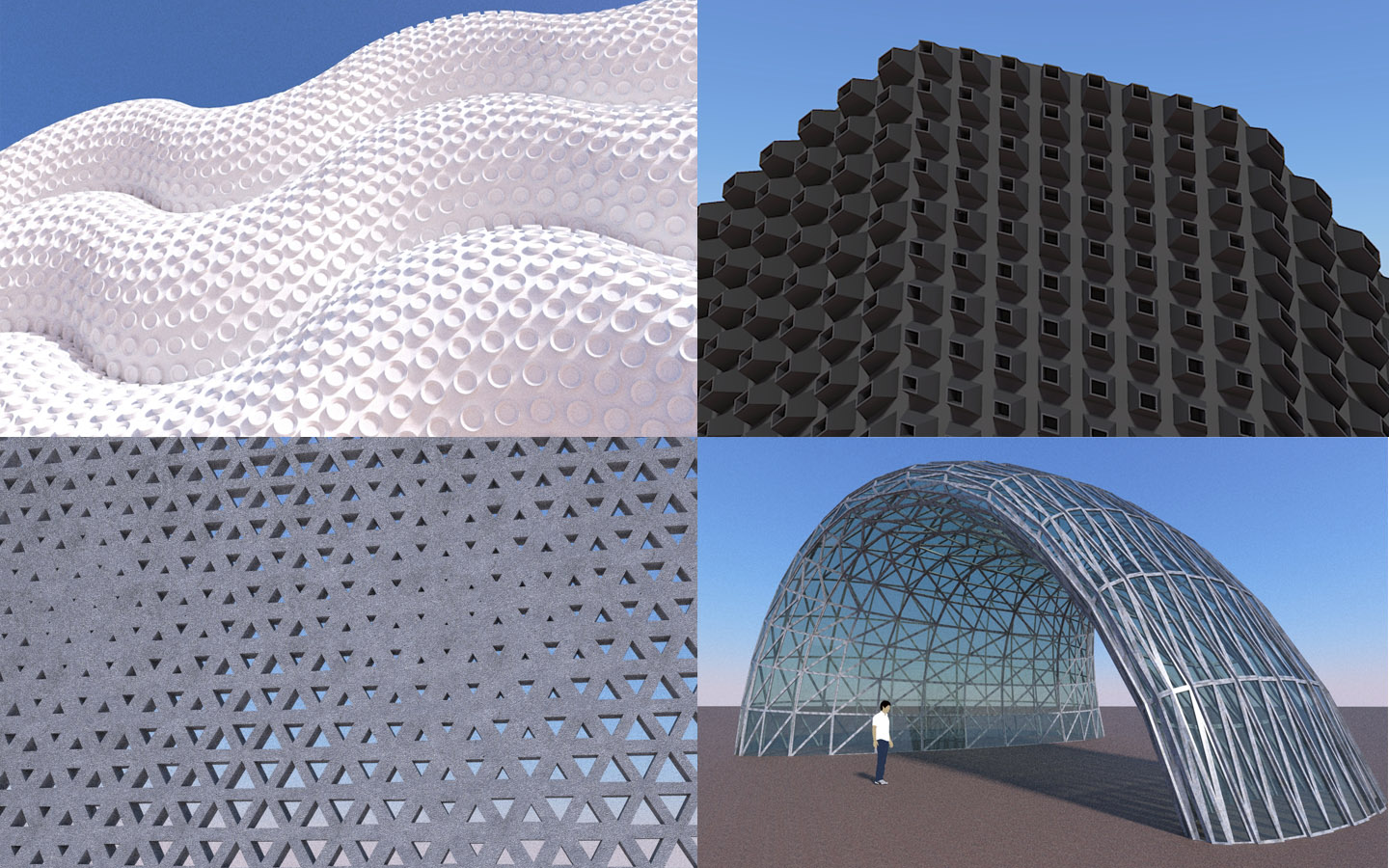

-
those are nice shura.. they look clean..
i tried this and found a few things that would probably help in sketchup.. make your patterns etc on quads..
this model has spheres intersecting with triangulated faces and there just to much that can go wrong doing that.. it makes a lot of gross little chunks of geometry.. basically, keep it simple.
this took the better part of a day just to add some thickness to it.. it fully choked sketchup and the only reason i let it go (seriously, 8+ hrs for JPP) was i was curious if it could actually finish the operation..
there's definitely some cleanup to do but the model is so sluggish at this point that i won't even bother

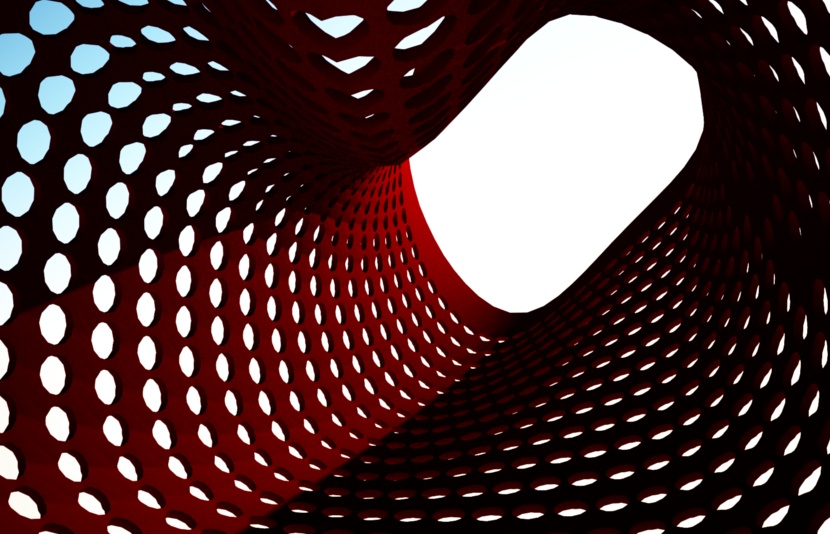
-
Wow, this help is overwhelming.
Jeff, I had no idea there was a beta for Rhino for mac, thank you very much for informing me. The model you created in Rhino is exactly the kind of surfaces i would love to achieve. Was this hard to do in Rhino?? I am completely new to it. Also the sketchup model you did in your previous post, how was this done? Really sorry for all the questions, but these are all models i would love to try and create.
Shura, thanks for your input. The examples that were in your post are also similar to what i would love to create. Where the patterned surfaces done in Sketchup and in the technique you posted in an earlier message?
Thanks again, your help and advice is much appreciated.
Kyle
-
That rhino drawing was super quick. Granted, I already know the basics of rhino.
I never used the paneling tools before your posts here but I watched a couple of the PT tutorials and was able to produce that in about ten minutes. There are tons of other options in the paneling tools which I'm now very interested in and am going to explore further.
The sketchup drawing took quite some time (not even considering the time it took SU to process some of the steps). I'm on a phone at the Airport right now so it'd be hard to get into exactly what I did but it involved using chris fullmer's component stringer using a sphere as the component.
Honestly though, if you really want to get into this type of stuff, I'd say learn rhino. Sketchup is great for a lot of things but this isn't one of them. Not saying it's impossible in sketchup but it's going to be very hard to take an idea and run with it experimentally whereas with rhino, you could run that idea in ten different direction within an hour. -
Yes it is all SketchUp. Try to learn how the plugins work that I have listed. In SU it is more a step by step process with little possibilties for later tweaking, but if you know what your result should look like and know the plugins' functions it should not be too difficult to figure out how to proceed.
short description on the test pictures in previous post:
1st: the white "octopus arms" are made using Components on Face plugin (suppose Jeff did the same on the red perforated tube, nice one Jeff!)
2nd: Taper Tool plugin makes it possible to shear components without making them unique
3rd: the pattern made of triangles was done with my "dropping pyramids" method.
4th: Lattice Maker plugin
5th: Slice Modeler plugin (plus coloured lights in Twilight Render)Sorry if this is a bit more than you have asked for in the first place - it is not meant to be overburdening. When it is only perforated sheets that you need, stick with dropping pyramids.

-
Thanks for your advice Jeff, i have been attempting to learn the basics and the basics of the panelling tools in Rhino. Its quite easy once you have a little play on it, but still need a lot of practice on it, going to have to cram as much play on it as i can before the beginning of term time. . . in less than a week. do you have any quick tips for Rhino? I have still been playing around with SU and have got some positive outcomes form all the advice, so thank you.
Shura, thank you too for sharing your great ideas on the different effects in your earlier post, i have been playing about with the plugins and they seem to be working for me, once i got the hang of what i can do with each, so i think its just a matter of time and practice.
Kyle

-
very welcome! would like to see some of your results posted here...
-
@kylebc86 said:
do you have any quick tips for Rhino?
not really.. not really anything that i think will be much help.
basically, i went through the entire rhino training.. (not the paid things.. just all the getting started, basic tutorials on all the tools, functions, etc..) i pretty much know what can be expected of rhino and used most parts of it but i'm still on the sluggish side (i still have to reference the manual sometimes in order to do something simple but i do have most of the simple things down by now)..i also did a lot of step by step tutorials drawing trivial things like an energy saving light bulb, a computer mouse, pliers, etc.etc. those helped me realize which directions i should go in when trying to draw a physical idea.
i wish i could offer better advise but i will say this, if you have an inkling of an idea that you're still going to be doing this type of stuff when in your thirties/forties, go ahead and dive in now and make yourself learn it.
-
Thanks for the shura's introduction I come to here.
I didn't know this kind of topic already exists.
I shows this kind things in my other post here http://forums.sketchucation.com/viewtopic.php?f=289&t=30749#p270444
You guys in this topics might be interested in.
I did that all in DC formulas.
And here I attach some of images from my post.
From above post you can download SU file.
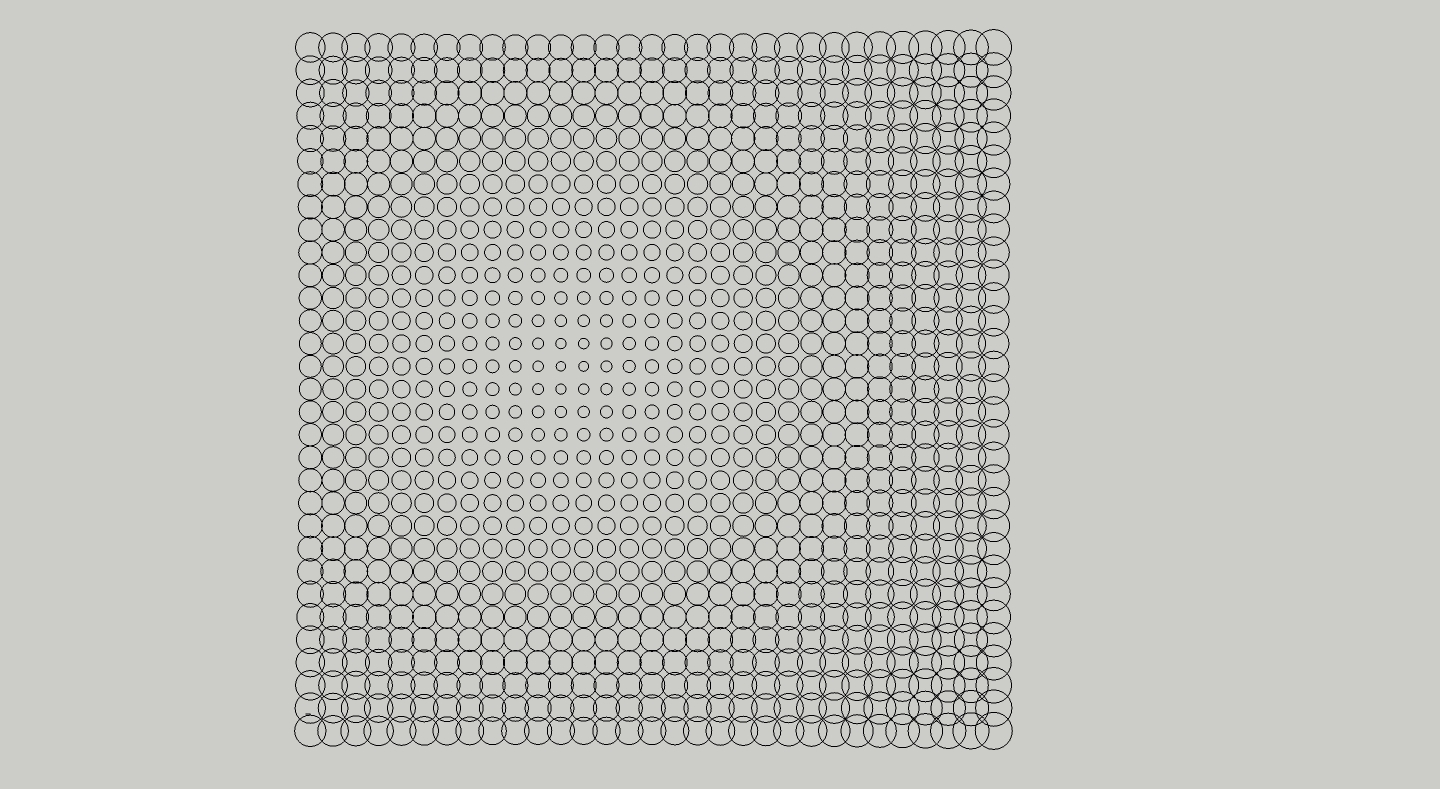
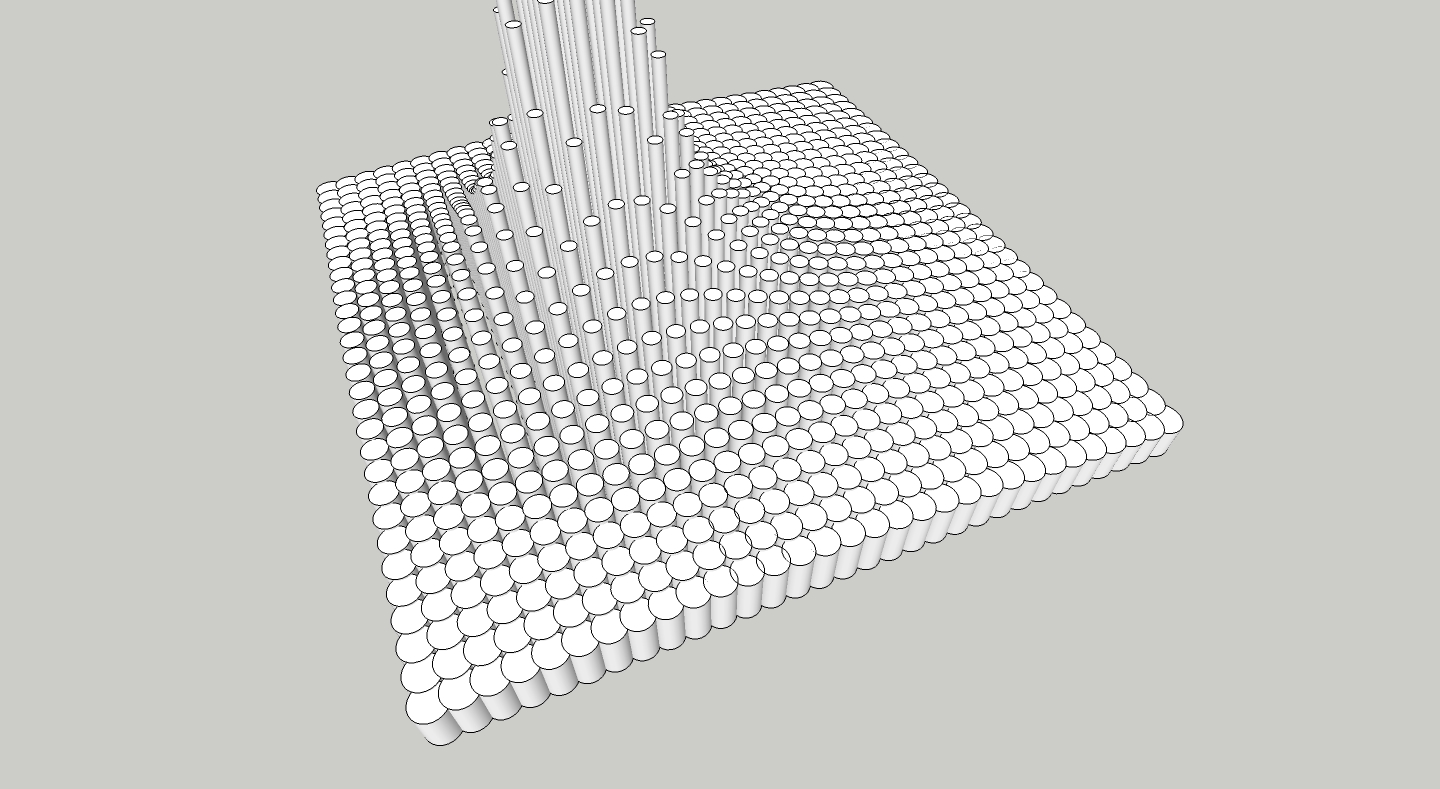
Advertisement







